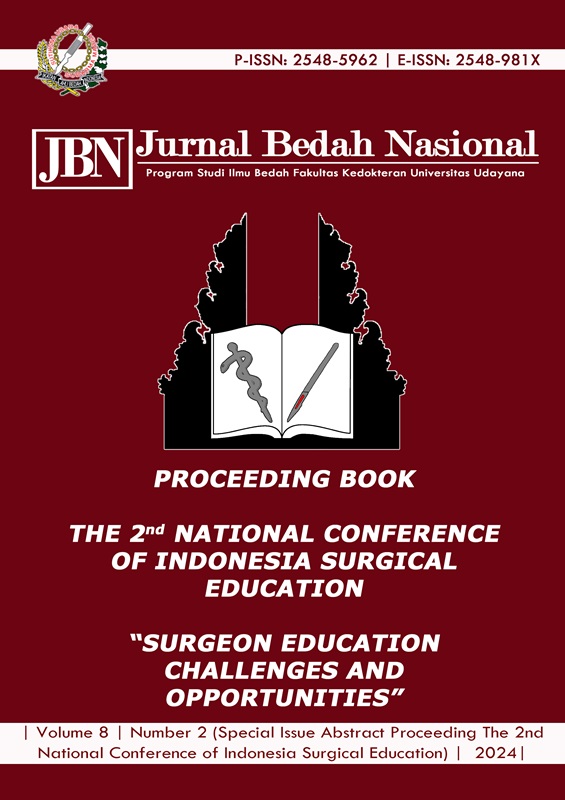013. Black Stools and Vomiting of Blood in Children Caused by Anemia Gravis ec Duodenal Ulcer Pars 2 with Perforation (Wound Healing with Branch A. Cystica Ruptur)
Abstract
Background: Duodenal ulcers are rare in children but can lead to life-threatening complications such as perforation and severe anemia. Upper gastrointestinal bleeding, manifesting as hematemesis and melena, can result in anemia gravis, necessitating urgent intervention. The rupture of a cystic artery branch during the wound healing process adds further complexity to the condition. This case report aims to describe presentation, diagnosis, and management of a child with duodenal ulcer pars 2 complicated by perforation and anemia gravis, with attention to the role of a ruptured cystic artery branch in the wound healing process. Case: A 15-year-old boy presented with a 5-day history of vomiting blood and black stools. Initial evaluation included thorough physical examination, laboratory tests to assess anemia severity, and imaging studies to localize the source of bleeding. The patient underwent emergency surgery for perforated duodenal ulcer and associated hemorrhage. Intraoperative findings revealed rupture of a branch of the cystic artery. The patient was diagnosed with anemia gravis due to gastrointestinal bleeding secondary to a perforated duodenal ulcer. Surgical repair of the perforation and arterial rupture was performed. Postoperatively, the patient's hemoglobin levels improved following blood transfusion and supportive care. The patient recovered without complications. Conclusion: Early recognition of duodenal ulcers with perforation in children is crucial, especially in cases with severe anemia. Prompt surgical intervention and management of associated arterial complications, such as cystic artery rupture, are essential for favorable outcomes. This case underscores the importance of a multidisciplinary approach in managing complex pediatric gastrointestinal emergencies.
Downloads

This work is licensed under a Creative Commons Attribution 4.0 International License.
Program Studi Ilmu Bedah Fakultas Kedokteran Universitas Udayana. 
This work is licensed under a Creative Commons Attribution 4.0 International License.






